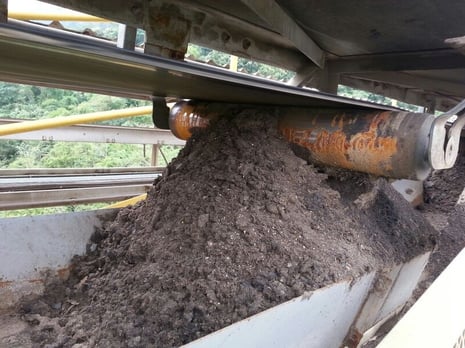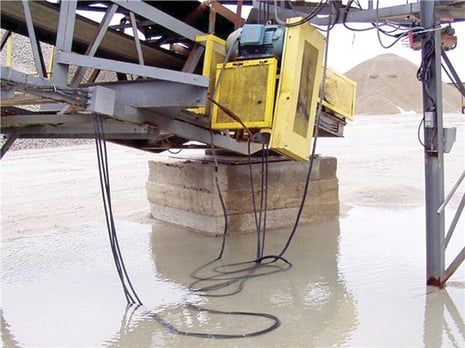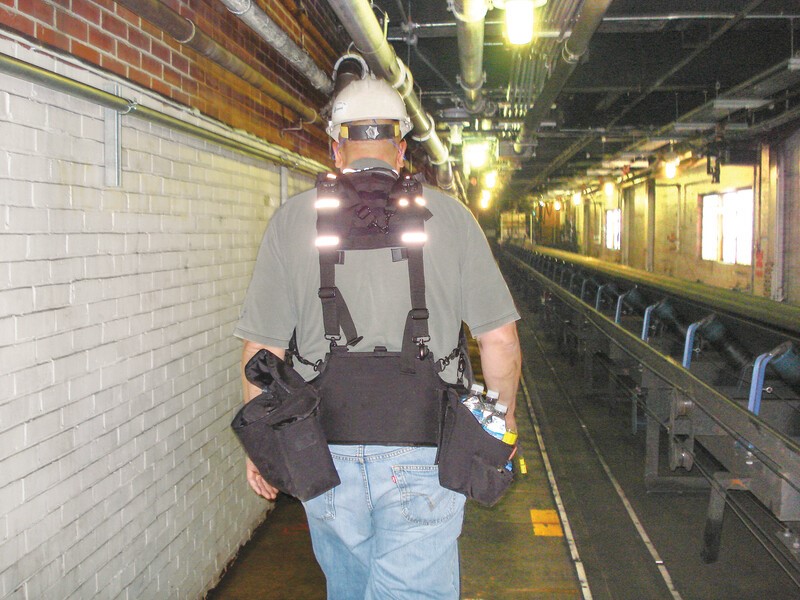By Dan Marshall on Apr 1, 2022 8:45:00 AM
Being involved in a wide variety of industries, I have seen a lot during my site visits. I wanted to share some of what I've seen with you: The Good, the Bad, and the Ugly.
The Good
I love this picture! It perfectly represents the life of a conveyor maintenance worker. Wandering along a belt with a thousand idlers behind him and a thousand idlers in front of him. Dust cakes his nose and mouth, filling his day and night with the smell of whatever the conveyor is hauling. He has no one to talk to. The only sound is the constant mournful wail of the conveyor bouncing back from the walls of the endless tunnel, almost loud enough to drown his thoughts but still able to give him a headache by 8:45 AM. They say you can’t hear a picture, but I think this is an exception...I can definitely hear this one. They say art is an image or sound that invokes emotion in just one person, so I guess this picture is art.

I know I have walked a hallway similar to this...some of you probably have as well. Because of the nature of conveyors, no two things are close to one another so simply moving from one place to another gives you plenty of time to think. At the end of this tunnel, is a personal goal and the motivation to keep people walking through it. For me, it is my family. I walk these long treks so they can eat and have a roof over their heads. Everyone has a story and personal goals and that is why it is so important to keep everyone safe and intact. See, a lot of time to think…🤔
Need tips on operating safe conveyors? Download a free copy of our Foundations™ For Conveyor Safety Book.
The Bad

When I first saw this, I thought, “this is a failure waiting to happen.” This belt is suffering from carryback - conveyed material sticking to the belt and being knocked off by the return idlers. Not only is this a safety issue because of trip and fall dangers but it is a lost material and a component damage issue. And soon, this will actually be a power issue. One of the reasons conveyors are popular is that they move material efficiently and inexpensively. This is achieved by placing the cargo on belts and using a motor to pull the belt over rolling components, idlers. As long as the components roll, the frictional drag on the system is low and therefore the motor can be smaller and less of an initial investment. When that pile of carryback accumulates to the point where it locks the idler(s) or touches the belt, it is no longer rolling with low friction. The motor has to deal with sliding friction at that point. Sliding friction is substantially higher than rolling friction, meaning that the same load will require more energy. If the area uses more power, more electricity must be pumped to the drive motor. More electricity equals more money. The drag may become so high that it exceeds the motor rating and the conveyor could stall out. Anybody who has been through an unexpected conveyor shutdown knows that it is a bad day for all.
The easy solution is to prevent carryback with well-designed and maintained  .
.
The Ugly

I’m a dad, so I have to get all of the “dad jokes” out of my system. Bare with me!
OH My goodness, I was SHOCKED to see this picture. The safety officer should be GROUNDED as their CURRENT safety system is problematic. It would take all of my POWER to overcome the RESISTANCE to stay in that area. WATT is the matter with this?
Ok, all done. 😆
Seriously, electricity is no joking matter. If you see something like this, let somebody know so an electrician can take care of it. For goodness sake, don’t touch it. Conveyor drive motors usually operate at 460 V and can draw as much as 100 hp. That can stop your heart many times over, so just steer clear.
Read more about safety in the blog post 
In case you are interested in reading my other "Good, Bad, Ugly" blog posts, click below:








comments